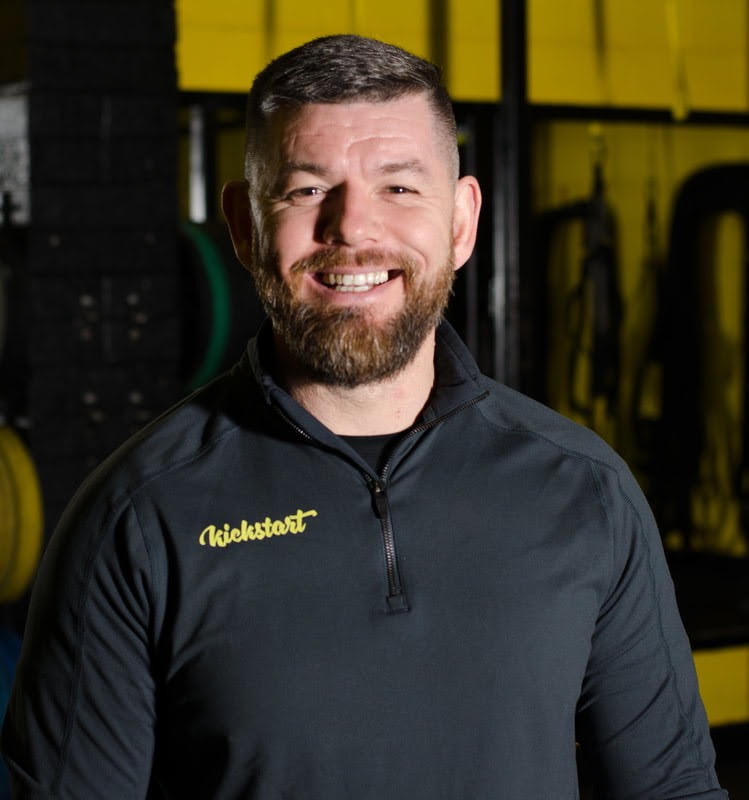Cultivating Culture
Coach DevelopmentABOUT THE AUTHOR

Darren Dillon
Darren Dillon is the owner and director of Kickstart Fitness Ireland. Founded in 2010, Kickstart Fitness has grown from what was initially a bootcamp in a local park into what is now a center of excellence for TRX®️Training and functional training, and a high performance hub for strength and conditioning. Darren also serves as head of performance at Shamrock Rovers FC, working with and programming for the academy through to senior professional soccer players. He is also Ireland’s only official TRX®️ Master Trainer, delivering all the company’s education courses to the Irish fitness industry.
I’m so sick and tired of hearing the word “culture!” It has gone from being a term that used to actually mean something significant to devolving into one of those overused and overhyped business buzzwords like “optimization” or “synergy” that deserves to be lampooned in a Dilbert comic strip or on HBO’s Silicon Valley.
The term has also become pervasive in sports, with everyone trying to figure out how to glean from or even replicate the culture of perennial winners like the New Zealand All Blacks, New England Patriots, and Manchester City.
I believe that for all the overuse of the word, culture is still important – and in fact, essential – for the sustained excellence of any group.
This is explored to great affect by Daniel Coyle in The Culture Code and Damian Hughes in The Barcelona Way, two books that get beyond the hoopla and HR department BS to the real heart of what a winning culture actually looks like in practice.
My personal experience with creating and perpetuating culture isn’t merely theoretical. I’m fortunate enough to be involved with not one but two organizations that exemplify strong values every day: Shamrock Rovers FC and Kickstart. In this article, I’ll share a few of the things I’ve learned along the way, with the hope that these observations can help you either fix a toxic culture or perpetuate one that’s already going strong.
// Humble Beginnings

When I began training others, eight people came to my first couple of bootcamps. I was related to six of them, and the other two were friends. They seemed to enjoy themselves and promised to bring more people. Sure enough, next time we met, the group had doubled in size. It was then that I realized that word of mouth was going to be a big deal.
In addition to letting people market for me by telling their friends and family members, I decided to set up a Facebook page to do the same digitally.
After every session my clients posted to say how much they enjoyed themselves. I started writing something semi-cryptic after every workout that only those who attended would get, like a joke about someone taking a tumble or me saying something silly. Within minutes of putting up the post, people would start adding comments and, not having the same need to regulate my time that I do now, we’d sometimes go back and forth for a couple of hours.
I suppose this is what social media gurus would call “engagement,” and it did indeed seem like I was enhancing my relationships with existing clients and gaining new ones by investing a little time each day on Facebook. My partner, Charlotte, and sister started also using the platform to process bookings for upcoming workouts and eventually memberships when we found the right facility.
// Providing a New Start
There was much about opening my own gym that I had to figure out as I went along and over the years there have been plenty of surprises. But other elements of the business were very deliberate from the get-go.
Take the name – Kickstart – for example. While to some this could be associated with New Year’s resolutions or trying to get back into working out to look good in time for a summer beach holiday, to me it has always meant much more.
I started the business during the Great Recession of 2008 to 2009, and had a sense that people wanted to get back to feeling good about themselves after losing their jobs, having to downsize their homes, and seeing our area become somewhat downtrodden.
We decided that our model was not going to be a high volume one that tried to attract hundreds of members or further a franchising model (though that’s not to say we wouldn’t consider expanding to more locations in the future if we could keep the quality high). Instead, we wanted to be the first in our area to offer the advantages of boutique fitness – like expert coaching, lots of attention, and lofty standards – to working class people.

We had to do something different and better to justify the higher cost of our memberships – 80 euros compared to the 25 or 30 the eight or nine big box gyms nearby charge. The key differentiator is the rich experience members have each and every time they walk through the doors. That isn’t just the classes themselves, but also the community events and games in the lobby that create a vibrant group atmosphere.
In considering what the culture of Kickstart should look and feel like, it was also clear that what our community needed was a family place where moms, dads, and their children could all come, be active, and have a good time. That’s why we have our “Kids Zone” upstairs and offer classes for all ages and ability levels. There are quite often handovers in the parking lot, when mom has just finished class and dad’s about to begin one, and they pass their children over.
There was also a dual purpose behind the commitment we made to movement quality from day one. This was partly due to the need to move safely and sustainably before you start adding speed, reps, and weight. But it also ties back to my desire to get our community moving again after the stagnation of the recession that dragged so many people down.
This wasn’t just a financial thing but was also reflected in the increasing prevalence of mental health issues that I wrote about in a recent TrainHeroic series. I’ve always wanted local people to consider Kickstart a catalyst to move better, feel better, look better, and perform better.
And this clearly resonated, as we went from two classes a week to six over our first summer and had 50 members showing up to some of our larger group sessions.
// Shamrock Rovers’ High Standards
As I mentioned earlier, a lot of people are fascinated by the culture at the biggest, most high profile football (soccer) clubs and the influence of managers like Alex Ferguson, Pep Guardiola, and, during his miraculous season leading underdog Leicester City to the Premier League title, Claudio Ranieri.
While the achievements of such clubs and their leaders are admirable, I also think there’s much to be learned from certain smaller outfits who are committed to doing things the right way. And while I’m obviously a bit biased, I believe that applies to the team I serve as performance director, Shamrock Rovers FC.
I could fill up a whole post with the standards we encourage players, coaches, and staff to meet, but for the sake of brevity, let’s focus on a couple that are most indicative of the club’s culture.

The first is that no player is allowed to pass a coach or member of the admin team without stopping, shaking hands, and saying, “Hello.” This doesn’t just apply to the first team squad or senior reserves, but also all the way down through our academy system, from the under-19s all the way to the under-8s.
If you came to our training ground or walked through one of the team buildings, I think you’d be surprised by just how many conversations are in progress at any one moment because of this policy. It’s partly a sign of mutual respect but also shows this club really is one big family in which people look out for one another. That was reflected in the outpouring of joy I witnessed after the lads scored a 94th minute winner in the first game of the season. The small crowd of 6,000 made as much noise as the 100,000 that pack AC Milan’s San Siro or Barcelona’s Nou Camp, and the fans rushed the field to congratulate the players afterwards.
Another cultural trait at Rovers is the kind of players we bring in. All the coaches are from Dublin and most of us come from what’d be called “blue collar” backgrounds in the States. In his book Game Changer, Fergus Connolly wrote about how the city where a team is based impacts its culture. As well as being shown in the recent Netflix documentary Sunderland ‘Til I Die, this is certainly the case with us, too. We only want players who are humble enough to learn and hard working enough to become the best they can possibly be. Anything less will not be tolerated by the staff, the fans, or the dressing room.
There’s a lot to like about the New Zealand All Blacks culture captured in James Kerr’s book Legacy. The biggest thing we’ve applied is the “no dickheads” rule. Nobody is bigger than the club or its goals as a unit, and so if you come in with a big ego, you won’t last very long. The players who do the best at Rovers are those who fully buy into our gritty, hard-nosed approach and bring their best every time they take to the training field or lace up their boots for a game.
// Leading by Example

Going back to Kickstart for a moment, I try to apply the same principles and values that I’ve learned at Shamrock Rovers to how I carry myself at the gym and what I expect from our other coaches.
If I ever walk through the reception area without stopping to have a quick chat with someone and shake their hand, shame on me. The fact that I own the place and am from the local area means that people expect me to train, coach, and sometimes simply be seen. For a while it was hard to meet this expectation due to my dual roles. But it came to a pivotal point when I had to commit to both and just cut out any excess away from the gym or the football club.
There was also the issue of complacency that crept in among certain staff members when I wasn’t around, which I take full responsibility for. I reversed that trend by being at Kickstart more (without detracting from my commitments at Rovers), devising new programming, and bringing in some new coaches.
To create and sustain a healthy culture you need someone to lead it, and that starts with me taking what Jocko Willink and Leif Babin call Extreme Ownership. If I want people to follow, I have to show myself capable and willing to guide them. And this is what I want people to feel every time I coach them or we bump into each other at the supermarket.
They should come away feeling valued, respected, and part of a community that truly cares about them. That’s all I could ever ask of our culture.
Are you a better coach after reading this?
More coaches and athletes than ever are reading the TrainHeroic blog, and it’s our mission to support them with usefull training & coaching content. If you found this article useful, please take a moment to share it on social media, engage with the author, and link to this article on your own blog or any forums you post on.
Be Your Best,
TrainHeroic Content Team
HEROIC SOCIAL
HEROIC SOCIAL
TRAINING LAB
Access the latest articles, reviews, and case studies from the top strength and conditioning minds in the TH Training Lab

